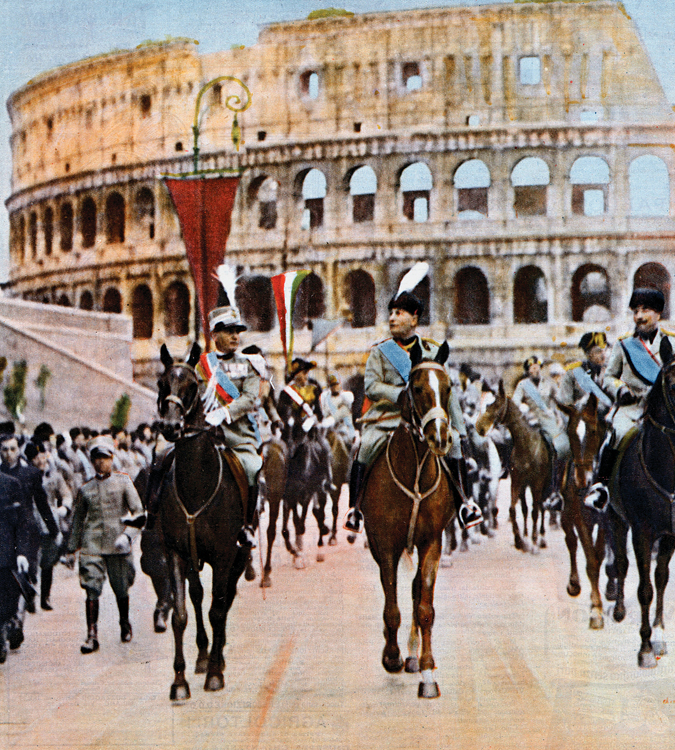The Seizure of Power
In the early twentieth century Italy was a liberal state with civil rights and a constitutional monarchy. On the eve of the First World War, the parliamentary regime granted universal male suffrage. But there were serious problems. Poverty was widespread, and many peasants were more attached to their villages and local interests than to the national state. Moreover, the papacy, many devout Catholics, conservatives, and landowners remained opposed to the middle-
World War I worsened the political situation. Having fought on the Allied side almost exclusively for purposes of territorial expansion, the parliamentary government disappointed Italian nationalists with Italy’s modest gains at the Paris Peace Conference. Workers and peasants also felt cheated: to win their support during the war, the government had promised social and land reform, which it failed to deliver after the war. (See “Viewpoints 30.2: Hitler, Mussolini, and the Great War.”)
The Russian Revolution inspired and energized Italy’s revolutionary socialist movement, and radical workers and peasants began occupying factories and seizing land in 1920. These actions scared and mobilized the property-
Into these crosscurrents of unrest and fear stepped Benito Mussolini (1883–

At first Mussolini’s program was a radical combination of nationalist and socialist demands, including territorial expansion, workers’ benefits, and land reform for peasants. As such, it competed directly with the well-
We deny the existence of two classes, because there are many more than two classes. We deny that human history can be explained in terms of economics. We deny your internationalism. That is a luxury article which only the elevated can practice, because peoples are passionately bound to their native soil.15
Mussolini and his private army of Black Shirts also turned to physical violence. Few people were killed, but Socialist newspapers, union halls, and local Socialist Party headquarters were destroyed. A skillful politician, Mussolini convinced his followers they were opposing the “Reds” while also making a real revolution of the little people against the established interests.
With the government breaking down in 1922, partly because of the chaos created by his Black Shirt bands, Mussolini stepped forward as the savior of order and property, demanding the existing government’s resignation and his own appointment by the king. In October 1922 thirty thousand Fascists marched on Rome, threatening the king and demanding he appoint Mussolini prime minister. Victor Emmanuel III (r. 1900–